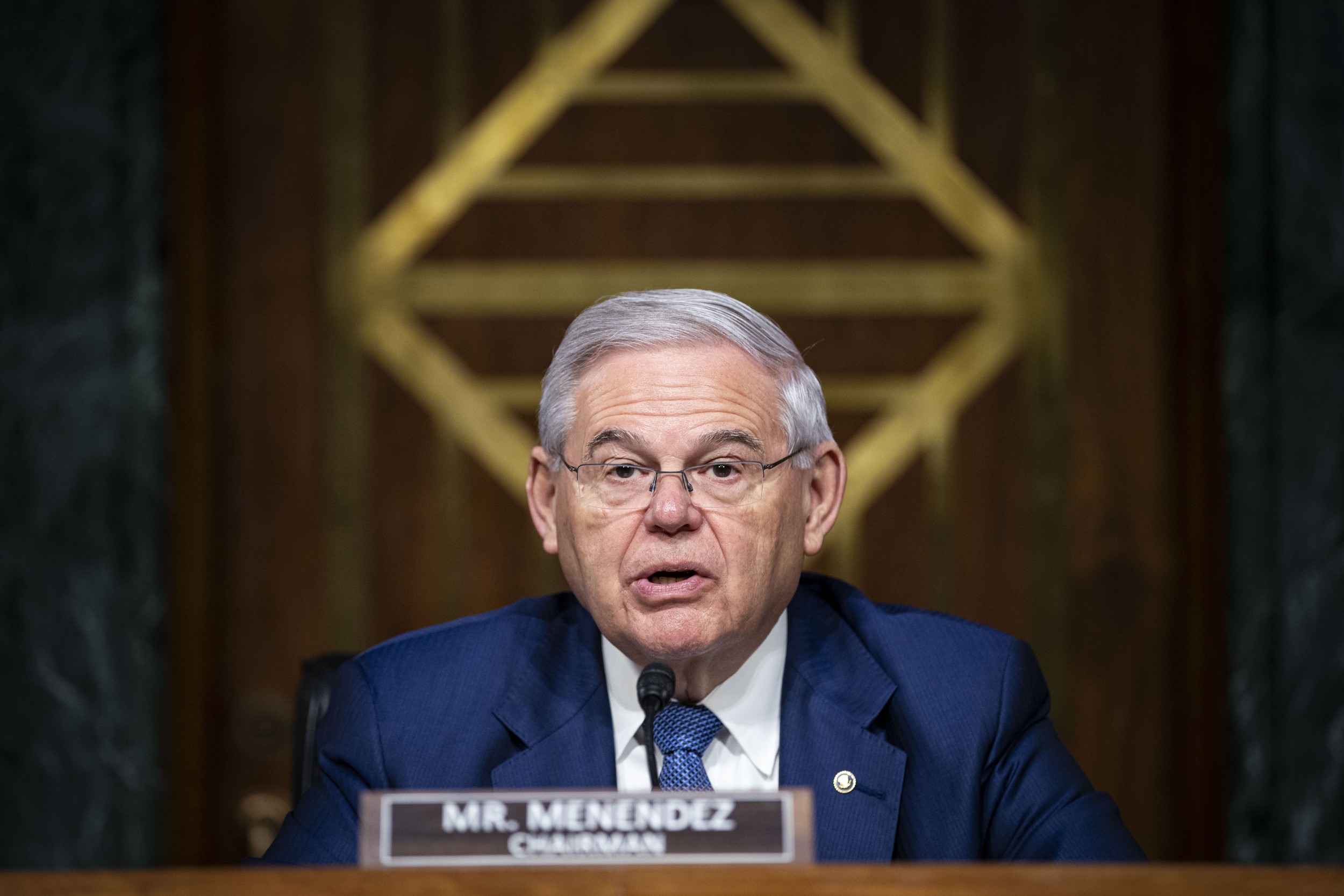Weather balloons have been drifting toward Taiwan for at least seven weeks in what defense experts say is China's latest tactic to keep up pressure on the self-ruled island, which it has vowed to someday take over.
An animated map compiled by Newsweek traces the paths of 58 balloons that have been detected crossing the Taiwan Strait's median line since December 7, the date Taiwanese authorities began reporting them. As of early Friday, around half of the balloons had violated Taiwan's territorial air space, including 16 that flew over the island itself, according to the Defense Ministry.
The People's Liberation Army sends aircraft over the strait's de facto buffer zone on a near-daily basis in what Beijing has described as a warning to Taipei's ruling Democratic Progressive Party, which has strongly rejected Chinese sovereignty claims over the island.
However, these aircraft—surveillance planes, bombers, fighter jets and drones—all have stopped short of entering Taiwan's airspace, operating instead within the island's self-declared air defense identification zone or in international airspace.
The humble balloon constitutes a new kind of headache for Taiwan's government, which last month said the objects were part of a campaign of psychological warfare meant to erode public confidence. Defense officials said the balloons would be "handled" according to their threat level, so far dismissing any possibility they could be shot down.
The Taiwanese Defense Ministry previously told Newsweek that it had detected what it continues to suspect were weather balloons before December 7, and that it decided to make public their flight paths in the interest of transparency. The daily government-issued graphics do not directly attribute them to the Chinese military.
"Political science research finds that people consider airspace incursions by unmanned systems to be far less escalatory than by, say, manned aircraft, and the balloons fall into the former category," Raymond Kuo, a political scientist at the RAND Corp. think tank, told Newsweek.
"It's a way for China to put more pressure on Taiwan, while not dramatically increasing the risk of escalation," Kuo said.
At a monthly press briefing in Beijing on Thursday, Chinese Defense Ministry spokesperson Col. Wu Qian declined to comment directly on the balloons. He accused Taiwan's government of using the issue "to incite confrontation across the strait."

Subject matter experts have spent years studying patterns in PLA flights and exercises around Taiwan, which they believe serve multiple purposes. These include routine combat training for Chinese pilots, to exhaust Taiwan's armed forces, and to signal displeasure to Taipei and Washington.
Chinese military flights into Taiwan's ADIZ surged in September 2020 after the administration of former President Donald Trump sent cabinet officials to Taipei. The activity intensified in August 2022 after Rep. Nancy Pelosi (D-CA) became the first sitting House speaker to set foot on the island in a quarter century.
In three and a half years, the PLA has flown more than 4,800 sorties into Taiwan's air defense zone, according to a database maintained by U.S. defense analysts Gerald C. Brown, Benjamin Lewis and Alex Kung.
"I don't think there can be any doubt that the balloons are a form of gray zone pressure from Beijing," Lewis told Newsweek, referring to coercive military or non-military measures that stop short of war.
Observers cannot know how many balloons were launched into the Taiwan Strait before December 7, but Lewis said the reported behavior varied greatly, ranging from 13,000-36,000 feet in altitude and drifting along various routes before disappearing.
The spike in airspace violations, which rose sharply in the two weeks before Taiwan held its presidential and legislative elections on January 13, made it "hard to deny a political element to these flights," he said.
In the past, overt Chinese saber-rattling has proven ineffective at swaying Taiwanese voters. But like the PLA sorties, the balloons could have a more practical use for Beijing.
Some of the balloons that overflew Taiwan's main island drifted near military installations, according to Lewis, who believes the accumulation of balloon flights will put Taiwanese defense authorities under pressure to act.

Taipei faces a conundrum. Continued overflights across Taiwan's territory show that "China can violate Taiwanese airspace at will," Kuo said. Shooting them down, however, is not cost effective—and risks an escalation with the world's largest military.
"It's a relatively tricky mission at higher altitudes, and the balloons are likely much cheaper than the missile needed to shoot one down. We also need to consider that a failed shootdown would harm Taiwanese morale," Kuo said.
Lewis said: "What I am confident in predicting is that if Taiwan does shoot down a balloon, we should expect China to overreact."
When a Chinese balloon made headlines early last year while traversing the continental United States, U.S. President Joe Biden ordered it shot down over the Atlantic Ocean.
The Pentagon said the dirigible carried sophisticated intelligence-gathering equipment. China said it was a weather-monitoring device that had strayed off course, claiming force majeure.
Secretary of State Antony Blinken was forced to postpone a planned trip to Beijing in the aftermath, and the diplomatic fallout that followed set back U.S.-China relations by months.
Uncommon Knowledge
Newsweek is committed to challenging conventional wisdom and finding connections in the search for common ground.
Newsweek is committed to challenging conventional wisdom and finding connections in the search for common ground.
About the writer
Micah McCartney is a reporter for Newsweek based in Taipei, Taiwan. He covers U.S.-China relations, East Asian and Southeast Asian ... Read more
To read how Newsweek uses AI as a newsroom tool, Click here.





